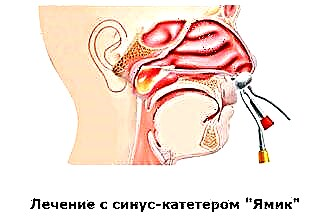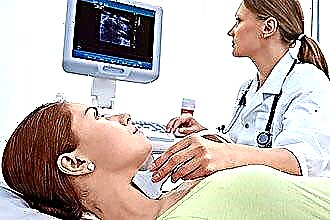Otitis media is an ENT disease characterized by the formation of foci of inflammation in the ear. The provocateurs of inflammation are infectious agents (bacteria, fungi, viruses), injury or an allergic reaction. More often, the disease occurs in children, which is associated with the peculiarities of the structure of the ear. Untimely treatment of pathology can lead to hearing loss or hearing loss.

What are the types of otitis media? There are many types of the disease, which is due not only to the cause of their occurrence and the peculiarities of the symptoms, but also to the place of localization. Inflammation can occur in one of three main areas of the ear, namely:
- external ear - represented by the auricle and the auditory canal. In the presence of foci of inflammation in these parts of the hearing aid, otitis externa develops;
- middle ear - consists of the tympanic cavity and three auditory ossicles, which are responsible for receiving sound signals from the outside;
- inner ear - includes the semicircular canals, cochlea and vestibules. Inflammation in this section of the ear is most often called labyrinthitis.
Of all types of otitis media, middle occurs in 82% of cases.
Classification
There are more than 5 options for the classification of ENT diseases, the varieties of which are determined by the location of the foci of inflammation, the characteristics of the course of inflammatory processes, the reasons for the development and morphological features of the pathology. Depending on the duration and characteristics of the course of the disease, the following types of otitis media are distinguished:
- acute - characterized by a vivid manifestation of the symptoms of pathology, which last for 7 to 20 days;
- subacute - has less pronounced symptoms, the duration of inflammatory processes ranges from 3-4 weeks to 3 months;
- chronic - a sluggish ENT pathology with unexpressed clinical manifestations. The development of the disease is said if the duration of a sluggish inflammation exceeds 3 months.
According to the etiological classification, the disease is divided into several types, which are determined by the causes that provoke pathological changes in the ear. Conventionally, ENT pathologies are divided into infectious and non-infectious, however, if a diagnosis is made, the specialist indicates a more accurate cause of the disease, as evidenced by the name of a specific type of otitis media:
- bacterial - provoked by pathogenic microbes that cause inflammation;
- viral - caused by viral agents that enter the ear during the development of common infectious diseases;
- fungal - occurs as a complication and development of yeast-like fungi in the middle or inner ear;
- allergic - a consequence of the body's allergic reaction to the penetration of allergic agents that provoke edema and irritation of tissues;
- traumatic - an ENT disease that develops as a result of damage to individual organs or parts of the ear.
The development of pathogenic flora in the ear is often evidenced by suppuration, severe tissue edema and itching.
Morphological classification
According to the picture of pathological processes and the place of localization of lesions, the ENT doctor determines the type of disease. According to the morphological classification of otitis media, the following types of pathology are determined:
- exudative - accompanied by the evacuation of liquid exudate from the ear canals;
- catarrhal - characterized by hyperemia and edema of the affected tissues;
- purulent - an infectious pathology, with the development of which suppuration is observed;
- bullous - occurs in the case of an infectious lesion of the body and is accompanied by the appearance of bubbles with bloody blotches on the surface of the tympanic membrane;
- adhesive - due to sluggish inflammation in the ear, adhesions may appear, as a result of which the patient develops hearing loss.
Depending on the place of localization of the foci of inflammation, the following types of ENT pathology are distinguished:
- right-sided otitis media - lesions are localized in the right ear;
- left-sided otitis media - lesions are localized in the left ear.
In the case of an infectious lesion of the hearing aid, bilateral otitis media often develops. To prevent damage to both ears, you should contact your ENT doctor at the first signs of illness.
Stages of development
In the case of an acute course of the inflammatory process, several main stages of the development of the disease can be distinguished. As a rule, acute infectious diseases do not lead to hearing loss. The only exception is purulent inflammation, as a result of which the morphofunctional structures of the auditory apparatus are destroyed. There are 5 main stages of otitis media of the middle ear, namely:
- acute eustachitis - a constant feeling of stuffiness or hum in the ears; in the presence of an infectious pathogen, a slight increase in temperature is possible;
- catarrhal inflammation - aseptic inflammation of the mucous membranes of the middle ear, which are accompanied by sharp pain and high temperature;
- preperforative purulent inflammation - hearing impairment associated with radiating pain to the eyes, teeth, oropharynx, etc.;
- post-perforated purulent inflammation - subsiding of the main symptoms of the disease with further suppuration, in which the hearing loss does not go away, but only intensifies;
- reparative stage - pathological processes in the ear are stopped, and the perforations present in the tissues are healed by scars.
Pathological changes can also occur in the tissues surrounding the auditory canals. As a result, the parotid salivary glands are often affected, which causes severe pain.
Otitis externa
With the development of this type of ENT disease, pathological processes mainly affect the external auditory canal. It contains an acidic environment that prevents the development of pathogens inside the ear. But as a result of water entering the ear canal, the pH level can change. As a result, pathogens can easily penetrate the tissues and provoke complications.
There are two main types of otitis media:
- limited - characterized by inflammation of the bulb or the appearance of a boil in the conductive parts of the ear. The presence of an abscess is signaled by pains that subside within a few days after the opening of the boil and evacuation of pus;
- diffuse - accompanied by damage to the tissues of the entire ear canal, which is due to the activity of the bacterial flora represented by streptococci. Diffuse ear damage most often occurs in allergic, bacterial and fungal types of ENT disease.
Labyrinthitis
Labyrinthitis is an ENT disease characterized by the appearance of lesions in the inner ear. As a rule, the disease occurs as a result of inflammation of the outer or middle ear, as well as general damage to the body by an infection that reaches the semicircular canals of the inner ear by hematogenous route. The provocateurs of pathological changes in tissues can be meningitis, microbial and viral pathogens, cranial injuries, etc.
Depending on the clinical manifestations, the following types of labyrinthitis are distinguished:
- acute - accompanied by severe pain in the head, dizziness, fever and vomiting. Over time, the patient develops a temporary deafness or persistent noise. After a few days, the tympanic membrane is perforated, as a result of which suppuration begins;
- chronic - develops against the background of other diseases, in particular gastroesophageal reflux.If fluid enters the Eustachian tube, inflammation occurs, which can turn into a sluggish form.

Acoustic trauma provoked by a fracture of the temporal bone leads to the development of labyrinth syndrome. Such injuries provoke not only hearing impairment, but also the development of paresis.
Otitis media
Inflammation in the tympanic cavity is often triggered by bacteria, viruses, or injury. The middle ear contains a complex bone mechanism responsible for the receptivity of sound waves. Therefore, damage to the hearing aid is fraught with hearing impairment and complete loss of hearing. The main types of otitis media in adults include:
- barotraumatic otitis media is a disease resulting from unilateral strong pressure on the walls of the tympanic membrane. A professional type of ENT disease that is most common in divers, swimmers and snorkelers. Often, with the progression of the disease, a secondary infection develops, provoking suppuration in the ear cavity;
- traumatic otitis media - a pathology in the hearing aid, provoked by trauma to the brain, cranium or spine. Fractures of the bones in the skull lead to deformation of the auditory ossicles and perforation of the membrane, resulting in inflammation and deterioration of hearing;
- post-traumatic otitis media is an infectious disease resulting from trauma to the organs of the hearing system. A decrease in the barrier function of tissues against the background of their damage creates conditions for the multiplication of bacteria or viruses, which provoke purulent processes in the ear;
- hemorrhagic otitis media - a pathological change in the state of the tympanic cavity caused by the accumulation of hemorrhagic (bloody) exudate. For this reason, the permeability of the blood capillaries in the membrane increases significantly, which leads to a decrease in its elasticity and, accordingly, to hearing impairment.
The transition of the disease to a chronic form leads to a significant deterioration in well-being and the risk of pathological changes not only in the tissues, but also in the periosteum.
Otitis media in children
It should be noted that ENT disease is much more common in children than in adults. This is due to the poorly developed structure of individual parts of the organ of hearing, as well as reduced reactivity of the body. Infectious diseases, injuries, poor hygiene, allergic reactions, vitamin deficiency, hypothermia or internal boils can provoke the development of pathology.
can provoke the development of pathology.
At the age of 10-12 years, the following types of otitis media are most common:
- influenza otitis media is a viral disease that develops against the background of a general infection of the body with the influenza virus. Pathogenic agents penetrate into the hearing aid hematogenously, as a result of which the inflammatory process develops. In 65% of cases, the disease occurs in children under the age of 12, which is associated with insufficient reactivity of the immune system and its inability to resist viral pathogens;
- secretory otitis media (catarrhal) - occurs mainly in children aged 2 to 8 years. It is provoked by pathogens of microbial or viral origin, the vital activity of which leads to inflammation and the separation of exudate from the ear. The catarrhal form of pathology can be a consequence of rhinitis, tonsillitis and other acute respiratory viral infections;
- perforated otitis media is a pathology that occurs mainly in the mucous membrane of the tympanic cavity. One of the main symptoms of the disease is suppuration, which contributes to the development of hearing loss. Pathology develops mainly in children under the age of 3-4 years due to an infectious lesion of the nose (chronic rhinitis, sinusitis).
Inflammatory processes in the ear cavity lead to the development of serious pathologies, most of which lead to the development of hearing loss and hearing loss. For this reason, when the first signs of pathology appear, you should seek help from a doctor.




